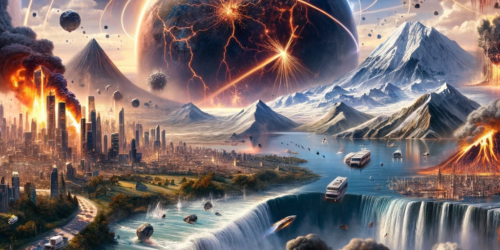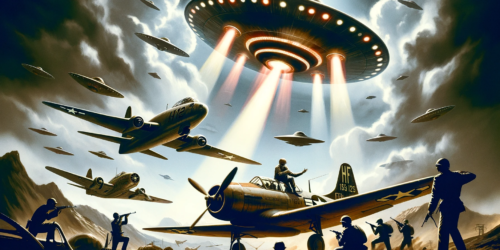Passport to Magonia: On UFOs, Folklore, and Parallel Worlds

“Passport to Magonia: On UFOs, Folklore, and Parallel Worlds” is a groundbreaking book written by Dr. Jacques Vallée, a renowned computer scientist, astronomer, and UFO researcher. First published in 1969, the book presents a unique perspective on the UFO phenomenon by drawing parallels between contemporary UFO encounters and historical folklore from various cultures. Vallée’s primary argument is that UFOs and their occupants may not necessarily be extraterrestrial in nature, but rather represent a phenomenon that has been a part of human experience throughout history.
- Continuity of the Phenomenon: Vallée argues that the UFO phenomenon is not a recent development but rather a continuous thread that runs through human history. He demonstrates this by comparing modern UFO sightings to ancient legends and myths from various cultures, suggesting that these seemingly unrelated events may share a common underlying phenomenon.
- Cultural Interpretation: Vallée posits that the way people interpret and understand UFO encounters is heavily influenced by their cultural background and belief systems. He provides numerous examples of how different cultures have interpreted the same phenomena in vastly different ways, from supernatural beings in ancient folklore to advanced extraterrestrial visitors in modern times.
- Ultraterrestrial Hypothesis: One of the key claims in “Passport to Magonia” is that UFOs and their occupants may not be extraterrestrial visitors but rather entities from another realm or dimension, sometimes referred to as “ultraterrestrials.” Vallée suggests that these entities have the ability to manipulate human perception and reality, leading to a wide range of seemingly inexplicable experiences.
- The Control System Theory: Vallée introduces the idea of a “control system” that operates behind the scenes, influencing human society and culture through a series of seemingly unrelated paranormal events. This control system may be responsible for shaping our beliefs, myths, and legends, as well as the UFO phenomenon itself.
- Patterns in UFO Sightings: Vallée highlights specific patterns and similarities that can be observed in UFO sightings and encounters, such as the recurrent appearance of certain types of entities, the use of specific symbols or motifs, and the association of UFOs with bodies of water.
- Parallels with Folklore: Vallée meticulously documents the striking similarities between modern UFO encounters and ancient myths and legends, such as encounters with fairies, elves, and other supernatural beings. He suggests that these parallels may indicate a common underlying phenomenon that transcends time and culture.
By comparing various accounts from different cultures and historical periods, he shows that people’s understanding of these events is shaped by their beliefs, traditions, and knowledge at the time. Here are a few examples to illustrate this point:
- Fairies and Elves: In European folklore, particularly in Celtic and Scandinavian traditions, stories of encounters with fairies, elves, and other supernatural beings were common. These creatures were often said to inhabit hidden realms or “Otherworlds,” accessible through specific locations or portals. People believed that these beings could abduct humans, cause mischief, or even bestow gifts and knowledge. Vallée argues that these tales share striking similarities with modern UFO and alien encounters, suggesting that they may be manifestations of the same underlying phenomenon, interpreted through the lens of the prevailing cultural beliefs.
- Native American Legends: Many indigenous cultures in North America have their own stories of supernatural beings or “star people” who visited or interacted with humans. These entities were sometimes considered to be spiritual guides or powerful beings from other realms. Vallée posits that these legends may represent encounters with the same phenomenon responsible for modern UFO sightings, but framed within the cultural and spiritual beliefs of Native American peoples.
- Religious Interpretations: Throughout history, people have often interpreted unexplained aerial phenomena in religious terms. For example, the “wheel within a wheel” vision described by the prophet Ezekiel in the Hebrew Bible has been interpreted by some as a possible UFO sighting. Similarly, medieval European Christian art sometimes depicts strange objects in the sky, which could be interpreted as UFOs, but were likely understood by contemporaries as divine manifestations or signs from God.
- Modern UFO Encounters: In the 20th and 21st centuries, as humanity’s understanding of the universe and space travel advanced, the interpretation of unexplained aerial phenomena shifted towards a more technological and extraterrestrial explanation. People began reporting encounters with advanced spacecraft and beings from other planets, often described as “aliens” or “extraterrestrials.” This modern interpretation reflects the influence of contemporary scientific knowledge and popular culture on the way people understand and explain these mysterious events.
By providing these examples, Vallée demonstrates that the interpretation of unexplained phenomena is not static but evolves over time, shaped by cultural and historical contexts. The same underlying phenomenon could be perceived as fairies, spiritual beings, divine manifestations, or extraterrestrial visitors, depending on the beliefs and knowledge of the people experiencing it.
Some important figures mentioned in the book include:
- Charles Fort: An American writer and researcher known for his work on anomalous phenomena, Fort’s ideas about the possibility of a hidden control system influencing human society inspired Vallée’s own theories.
- Carl Gustav Jung: A Swiss psychiatrist and psychoanalyst, Jung’s theories on the collective unconscious and the role of archetypes in shaping human experience are discussed in relation to the UFO phenomenon.
Several books have been written about “Passport to Magonia” or inspired by its ideas.
- “Operation Trojan Horse” by John Keel: Published in 1970, Keel’s book expands on Vallée’s ideas by examining the possible connections between UFOs, supernatural events, and other anomalous phenomena. Keel suggests that these occurrences may be part of a larger, orchestrated deception.
- “The Mothman Prophecies” by John Keel: In this 1975 book, Keel explores the mysterious Mothman sightings in West Virginia, linking them to the control system theory proposed by Vallée.
- “Messengers of Deception: UFO Contacts and Cults” by Jacques Vallée: In this 1979 follow-up to “Passport to Magonia,” Vallée looks deeper into the manipulative aspects of the UFO phenomenon, examining how it may be used to influence human behavior and belief systems through contactee movements and cults.
- “Dimensions: A Casebook of Alien Contact” by Jacques Vallée: Published in 1988, this book further develops the ideas presented in “Passport to Magonia,” focusing on the multidimensional nature of the UFO phenomenon and its potential connections to other paranormal events.
- “The Trickster and the Paranormal” by George P. Hansen: In this 2001 book, Hansen explores the role of the trickster archetype in various paranormal phenomena, including UFOs. He discusses Vallée’s work in “Passport to Magonia” and its implications for understanding the complex, elusive nature of these experiences.
- “High Strangeness: Hyperdimensions and the Process of Alien Abduction” by Laura Knight-Jadczyk: Published in 2004, Knight-Jadczyk’s book examines the possible links between UFOs, alien abductions, and hyperdimensional realities. The author draws on Vallée’s work in “Passport to Magonia” to support her theories.
“Passport to Magonia: On UFOs, Folklore, and Parallel Worlds” is a seminal work by Jacques Vallée that challenges conventional extraterrestrial explanations for the UFO phenomenon. Vallée presents compelling evidence to suggest that UFOs and their occupants may be part of a larger, multidimensional reality that has influenced human culture and beliefs throughout history. By drawing connections between modern UFO encounters and ancient folklore, Vallée proposes that these seemingly disparate events may share a common underlying phenomenon.



